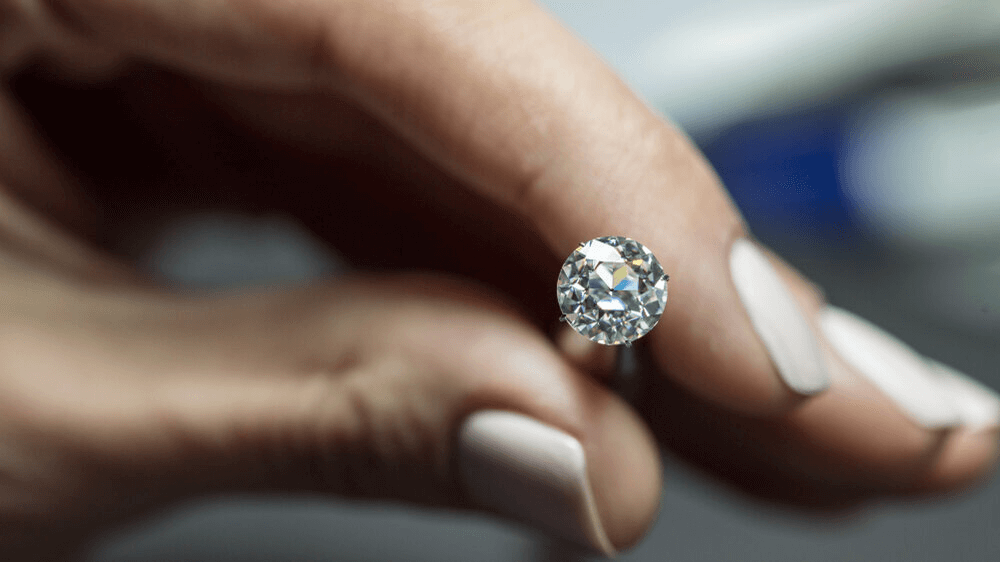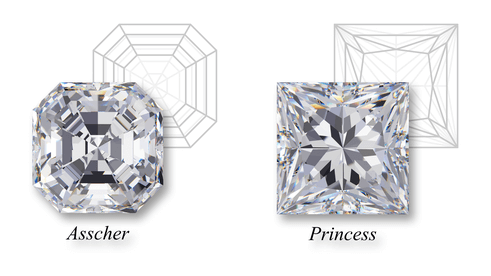Round Cut Diamonds: Dazzle with Every Angle

By Gary A.

Edited by Olivia H.
Published Jun 28, 2022
Edited on Mar 31, 2025
The timeless appeal of round cut diamonds lies in their unmatched brilliance and versatility, making them a popular choice for anyone seeking an engagement ring that truly shines.

Navigate This Guide:
- 7 Quick Tips for Purchasing a Round Cut Diamond Engagement Ring
- Introduction
- The History and Evolution of Round Cut Diamonds
- Decoding the Round: Anatomy of a Sparkle
- Choosing Your Round Cut Diamond
- The Technical Side of Beauty: Ideal Proportions and Angles
- The Cost of Round Cut Brilliance
- Round Cut Diamond Engagement Rings: Key Considerations
- The Pros and Cons of Picking a Round Diamond
- Our Expert Take
- 10 FAQs
Before we dive deeper into the specifics, here are some practical tips to help guide your decision-making process:
7 Quick Tips for Purchasing a Round Cut Diamond Engagement Ring
- Tip 1: Understanding the 4Cs: Cut, Color, Clarity, and Carat Cut: The cut is crucial for a round diamond as it determines the stone’s brilliance. Look for diamonds with a ‘Very Good’ to ‘Excellent’ cut grade for optimal sparkle. Color: Choose a diamond within the G to J range on the color scale. Slight coloration is less noticeable in round cut diamonds, allowing you to prioritize other aspects. Clarity: Aim for a clarity grade where inclusions are not visible to the naked eye, typically SI1 or SI2. This offers a balance between beauty and budget. Carat: Decide on the carat weight based on personal preference and budget. Remember, a well-cut, smaller diamond can appear larger due to its sparkle.
- Tip 2: Analyzing the Length-to-Width Ratio: Ensure the length-to-width (L/W) ratio is close to 1.00. This ratio in round diamonds signifies a perfectly circular shape, crucial for achieving maximum symmetry and brilliance.
- Tip 3: Checking for Symmetry and Polish: Inspect the diamond’s symmetry and polish grades. These should ideally be ‘Very Good’ or ‘Excellent’. Symmetry affects the alignment of the facets, while polish impacts the smoothness, both contributing to the overall sparkle.
- Tip 4: Pay Attention to the Setting: The setting can enhance the diamond’s appearance. For round cut diamonds, popular settings include solitaire, halo, and pavé. Choose a setting that not only secures the diamond but also complements its shape.
- Tip 5: Evaluating Fluorescence: Consider the diamond’s fluorescence. While some fluorescence can be beneficial in lower-color diamonds (it can make them appear whiter), strong fluorescence might cause the diamond to appear hazy.
- Tip 6: Reviewing the Diamond Certificate: Always check the diamond’s certification from a reputable lab like GIA or AGS. The certificate provides a detailed analysis of the diamond’s characteristics and ensures its quality and authenticity.
- Tip 7: Comparing Different Options: Compare diamonds side by side when possible. Viewing multiple diamonds can help you understand the differences in quality and value, and also what appeals to you visually in a round cut diamond.
Now that you’ve got these practical tips, use Jeweler AI below to find the perfect engagement ring that suits your style and budget:
Introduction
Of all the diamond shapes available today, the Round Brilliant is surely the one that needs the least introduction – though there’s plenty more to this shape than what meets the eye.
The Round Brilliant enjoys a level of prominence no other diamond cut has. Whether on its own, or set within a solitaire engagement ring, it’s a symbol as recognizable as the heart is for love, commitment, and a moment so many of us dream about: the moment she says yes.
Understanding the Allure
Traditional, versatile, and just that little bit more brilliant than any other diamond shape out there, the Round Brilliant is one that will tempt all of us during our search for the perfect engagement ring – but is it right for you?

The History and Evolution of Round Cut Diamonds
It was in the 18th century that the Round Brilliant cut was introduced. In the beginning, it had 17 facets on the crown (upper half), although this was eventually increased to 33, which enhanced its fire and brilliance.
By 1900, modern diamond cutting techniques were advanced with incredible speed, and the development of diamond saws and good jewelry lathes made it possible for the Round brilliant cut to be perfected. As we mentioned, this cut was analyzed in 1919 by Marcel Tolkowsky, whose calculations took brilliance (how much white light was reflected) and fire into consideration, creating a delicate balance between the two. Future brilliant-cut modifications, guidelines, and standards would be based on these calculations, to this very day.
By the 1940s, with the release of De Beers’ pivotal advertising campaign for diamond engagement rings, the Round cut was transformed into the instantly recognizable symbol of love and commitment that we know so well today.
Since then, many other diamond cuts have enjoyed time in the limelight – but always alongside the Round cut, which enjoys a permanent place in our hearts as the most versatile and sparkly diamond cut available to it. It’s no wonder that it’s such a popular choice for brides.
Understanding the Popularity of Round Cut Diamonds
Their sparkle and versatility – not to mention the fact that they’re practically synonymous with the traditional engagement ring – allows them to enjoy high popularity around the world.
We’ve already touched on how superior the Round diamond’s sparkle is, and how no other cut – even one of the modified brilliant cuts – can rival a well-cut Round diamond in terms of fire, brilliance, and scintillation. For some people, this is enough to make the process of choosing a diamond shape a done deal, and to convince them that Round Brilliant is the way to go.
For others, their ability to look beautiful in any setting is enough.
Take this simple, understated Round Solitaire Engagement Ring, for instance. Here, the diamond does all the talking – and every little detail that makes the Round Brilliant cut so exquisite is made obvious by the subtle setting.
At the other end of the scale, this shimmering Round Halo Engagement Ring in Platinum boosts the cut’s high sparkle even further, and creates something that almost appears to create its own source of light, and create an other-worldly, bright glitter on the finger.
In these two examples alone, you can see quite how easy it is to transform this beautiful cut into something that suits your future bride’s tastes, and demonstrates the cut’s innate beauty.
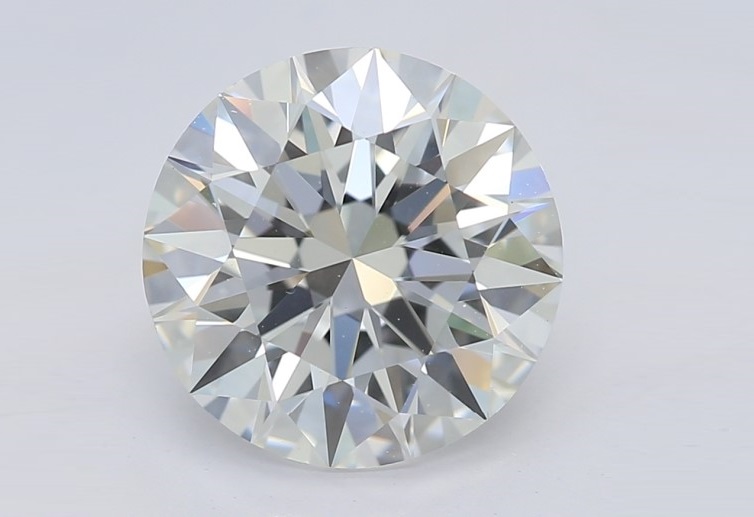
Decoding the Round: Anatomy of a Sparkle
‘Round Brilliant’ is the proper term for the modern Round cut, which was specifically designed to generate the highest level of brilliance (sparkle) possible.
A brilliant cut is one that utilizes a particular facet pattern (the many faces on the surface of a cut diamond) to maximize the diamond’s sparkle.
The cut was created in the 1700s, but reworked in the early twentieth century by a diamond cutter known as Marcel Tolkowsky, with the express intention of creating a diamond shape capable of creating a better light performance than any other.
As a result, the Round cut is also known as the brilliant cut, with any of the other diamond shape that utilizes a brilliant facet pattern referred to as a ‘modified’ brilliant. These modified brilliant shapes include the Oval, the Pear, the Cushion, and the Marquise cuts, which, while capable of creating a lot of sparkle themselves, are not able to rival the level of brilliance and fire created by an exquisitely proportioned Round cut.
A brilliant cut represents the opposite of the step cuts, found in Emerald and Asscher cut diamonds.
The cut is, of course, a round diamond with no sharp edges, featuring 58 separate facets (including the culet). Of all diamonds, the Round cut shows the most sparkle if you look at it from above.
Facets, Fire, and Brilliance Explained
A Brilliant cut will feature many small, pyramid shaped diamonds placed base-to-base across the face of the diamond.
Thirty-three of the Round diamond’s facets are found on the crown, which is the angled portion found around the edge of the diamond’s table – the largest facet, through which most light is received and reflected.
The rest of the facets are found below the girdle, in the pavilion, which narrows to a sharp point or a small culet, depending on the diamond. As with any diamond, the proportions will vary from stone to stone, but there is an ideal range any shopper should aim for if they want to get the most beauty and sparkle out of their diamond (more on that in the tables below).
Choosing Your Round Cut Diamond
So, you’ve made up your mind to pursue the beautiful Round cut for your engagement ring. In one sense, the hard part is over but, in another, it’s only just beginning. To get you started, here’s what you need to know in order to make sure you pick a knock-out diamond for your bride-to-be.
A Round cut diamond should be set with 4 prongs or 6 prongs to protect the diamond polish and light. Round cuts work with many different styles, including solitaire and three-stone engagement rings.
For a classic Round cut, look for a length-to-width ratio of 1.00 to 1.01. A length-to-width ratio of 1.02 still looks round because the sides of the diamond will create the illusion of a greater width in the center.

The Best Clarity Grade for Round Cut Diamonds
VS1, but potentially as low as SI1.
While it’s tempting to go for the highest clarity grade possible, Round cut diamonds can appear flawless (we call this eye clean) at much lower clarity grades. The exact clarity grade depends on the size of the diamond (larger diamonds risk showing more inclusions than smaller diamonds, where minor inclusions can be concealed by the many facets and the high level of sparkle).
The Best Color Grade for the Round Cut Diamond
Round diamonds are pretty good at concealing a minor amount of color, though you’ll still want to limit your search to the Near Colorless grades G, H, I and J.
A noticeable yellow tinge can really impede on the beauty of a diamond. You definitely don’t need to aim for the very highest color grades here, but you do need to exercise caution. Make sure you choose a seller that puts care into diamond quality and standards.
The Best Cut Grade for Round Diamonds
A GIA cut grade of Excellent is by far the best choice for anyone browsing Round diamonds.
A grade of Very Good will also look beautiful in a ring setting, but we would never recommend our readers go below this grade on the GIA’s cut scale. You can browse our full range of Round cut Diamonds here, all of which feature cut grades of Excellent or Very Good.
The following cut, color, and clarity guides should be taken into consideration when choosing a Round cut diamond:
The Technical Side of Beauty: Ideal Proportions and Angles
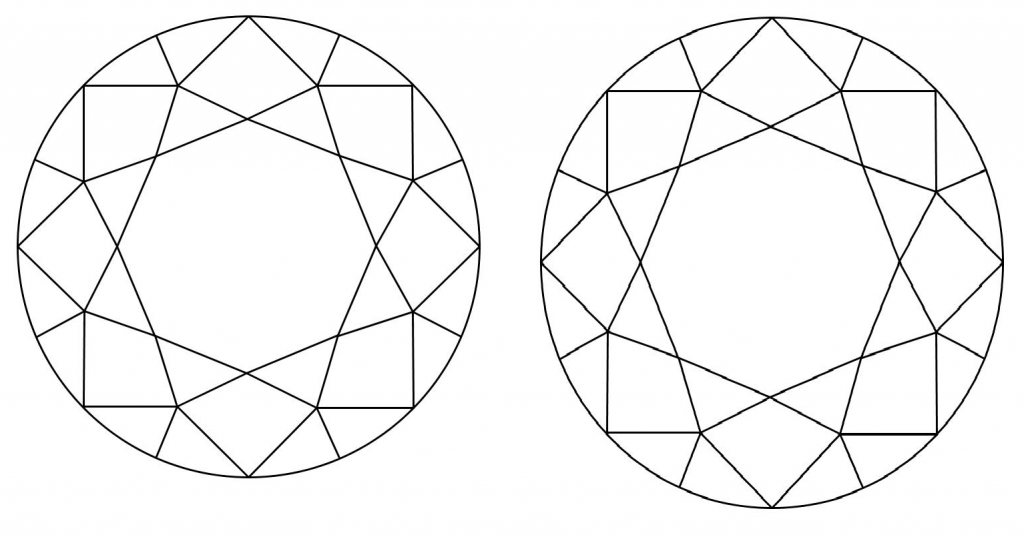
In the image you may see the difference between a round cut diamond ratio LW – 1.00 and a LW – 1.05
Round Cut Diamond Guide – Cut
The cut attributes of a diamond contribute to its sparkle, brilliance, and bling. Most knowledgeable buyers would choose attributes from the Excellent – Very Good columns.
| Excellent | Very Good | Good | Fair | Poor | |
| Table % | 56 – 59.9 | 54 – 55.9 or 60 – 60.9 | 52 – 53.9 or 61 – 64.9 | 50 – 51.9 or 65 – 69.9 | <49.9 or >70 |
| Depth % | 59 – 62.3 | 58 – 58.9 or 62.4 – 63.5 | 57.5 – 57.9 or 63.9 – 64.1 | 56.5 – 57.4 or 64.2 – 65.9 | <56.4 or >66 |
| Girdle | Thin to Slightly Thick | Very Thin to Slightly Thick | Very Thin or Thick | Very Thin or Very Thick | Extremely Thin or ExtremelyThick |
| Culet | None | Very Small | Small | Medium | >Medium |
Round Cut Diamond Length-to-Width Guide
A classic Round Cut diamond has a length-to-width ratio of 1.00 to 1.01.
| Excellent | Very Good | Good | Fair | Poor | |
| L/W Ratio | 1.00 – 1.009 | 1.01 – 1.019 | 1.02 – 1.029 | 1.03 – 1.033 | >1.034 |
Round Cut Diamond Symmetry, Polish, Cut and Fluorescence Guide
Our experience suggests that Cut, Symmetry, Polish, and Fluorescence contributes to a diamond’s brilliance so that most buyers will choose Excellent – Very Good and Fluorescence None – Faint.
| Excellent | Very Good | Good | Fair | Poor | |
| Cut | Excellent | Very Good | Good | Fair – Poor | |
| Polish | Excellent | Very Good | Good | Fair – Poor | |
| Symmetry | Excellent | Very Good | Good | Fair – Poor | |
| Fluorescence | None | Faint | Medium | Strong –Very Strong |
Round Cut Diamond Color Guide
Most buyers prefer size over color hue and will buy a diamond of G color.
| Excellent | Very Good | Good | Fair | Poor | |
| < 0.50 ct. | D – G | H – I | J – K | L – M | > N |
| 0.51 – 1.00 ct. | D – G | H – I | IJ – K | K | > L |
| 1.00 – 2.00 ct. | D – G | H | I – J | K | > L |
| >2.00 ct. | D – G | H | I – J | K | > L |
Round Cut Diamond Clarity Guide
Most buyers prefer size over clarity cleanse and will buy a diamond of SI1 Clarity.
| Excellent | Very Good | Good | Fair | Poor | |
| < 0.50 ct. | FL – VS2 | SI1 – SI2 | I1 | I2 | > I3 |
| 0.51 – 1.00 ct. | FL – VS1 | VS2 – SI1 | SI2 | I1 – I2 | > I3 |
| 1.00 – 2.00 ct. | FL – VS1 | VS2 – SI1 | SI2 | I1 | I2 – I3 |
| >2.00 ct. | FL – VS1 | VS2 – SI1 | SI2 | I1 | I2 – I3 |
The Cost of Round Cut Brilliance
Round diamonds can be hundreds or thousands of dollars more expensive than other diamond cuts, even if the diamonds in question feature the same grades for cut, color and clarity, and the same carat weight.
Why? For several reasons. First off, the Round Brilliant cut is the most popular cut available today. As we mentioned above, there really has been no point in the last hundred or so years when the Round cut was not revered as a classic and beautiful choice for jewelry, and that has led to it holding a higher value on the market.
Another reason behind its higher cost has to do with the difficulties involved in cutting it. Obviously, diamonds are mined from the earth in highly irregular shapes and, while some diamond shapes enable the diamond cutter to preserve, creating a high quality round cut requires the diamond cutter to sacrifice a lot of the original stone. Of course, they can use this wastage to create another diamond – or many other, smaller diamonds – but the greatest value always lies in creating the largest diamonds possible, which means that a Round cut is rarely the most economical choice.
Round Cut Diamond Engagement Rings: Key Considerations
Everything else you needed to know…
Are Round Diamonds Out of Style?
No, Round diamonds continue to enjoy the highest level of popularity among engagement ring shoppers.
This brings us to yet another selling point for the Round cut: it ability to endure through countless trends and styles, and remain the classic choice for any bride to be.
Some styles, like the Pear and Heart shapes, tend to come in and out of popularity over the years. While these rings always look beautiful, the cuts are pretty used to enjoying a little while in the sun before being pushed down in favor of other styles for a few months or years.
The Round is often referred to as the ‘Little Black Dress’ of the diamond world, as it sits above the changing tides of fashions and trends and offers a beautiful staple for a timeless ring design.
Is a Round Engagement Ring Boring?
Not at all. The Round Brilliance is a classic shape, and not one that comes in and out of style every few years.
There is every chance that plenty of readers have made it this far, only to find that the little voice in the back of their heads – the one saying, ‘Go for the Round Brilliant’ – is no quieter.This shouldn’t come as a surprise, given the face that Round cut diamonds account for more than half of the engagement rings purchased in the US each year. While every diamond shape is beautiful, for so many of us it is impossible to improve upon the classics.So, no, a Round diamond – even a Round cut Solitaire, the most traditional design of all – is far from boring, you’re not boring for still coming back to it no matter how much you learn about the other shapes.
Is a 2 Carat Round Diamond Big?
2 carats is above the current average for diamond engagement rings, and will look noticeably bigger than the more commonly chosen 1 – 1.5 carat diamonds.
While size depends on proportion, a Round diamond with an Excellent cut grade will generally feature a diameter of around 8mm, whereas a 1 carat diamond will feature a diameter of around 6.5mm.
A 2 carat diamond will create an unmissable focal point on the finger of your future bride, and create a truly dazzling performance of fire, brilliance, and scintillation with every slight movement of her hand.
Is 2.5 Carat too Big?
No, many people are now favoring larger diamonds – above the national average.
There is, however, one exception to this rule. A diamond is ‘too big’ if, in order to invest in that carat weight, you’ve had to sacrifice the quality of the stone.
In other words, a 2.5 carat diamond will be too big if it features visible and obstructive inclusions that diminish its beauty and sparkle, an unignorable yellow color, or poor cut dimensions that jeopardize its light performance.
Finding the best diamond possible means not prioritizing size – or any single aspect – over the rest of the diamond’s features.
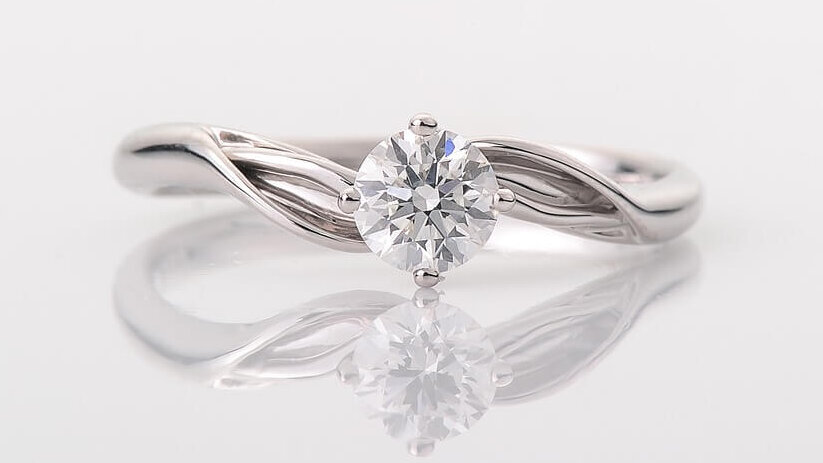
The Pros and Cons of Picking a Round Diamond
Pros
The Round cut diamond is versatile and looks beautiful in almost any engagement ring setting. When placed in intricate settings, they are just as beautiful when set on a simple band like a solitaire. Its design means that it will get you the most sparkle possible, and that your ring will never go out of style even as trends and fashions evolve.
Cons
The Round cut diamond is the most expensive diamond cut. This is partly because of the high amount of diamond rough wasted with the cutting process. Due to lower yields, consumer prices rise. It also looks a little smaller than other diamonds that feature the same carat weight, but an elongated shape, such as the Marquise, Pear and Oval.
Our Expert Take
The Round Brilliant has not remained the number one choice for engagement rings for nothing, and it’s not difficult to understand why it will always be a classic.
One of the most remarkable things about the Round cut is the fact that, while it has been popular since the mid-1900s, it doesn’t look vintage or overly-traditional unless you pick out a more old-fashioned style of ring setting. It can look modern, modest, out-there, or highly traditional, however you choose to present it.
Obviously, this is not the most economic choice. It’s possible to get a more affordable diamond of the same quality and carat weight if you simply decide to look at one of the less-popular diamond shapes. Some of these, like the Pear or the Cushion, feature a brilliant facet pattern, while other more affordable options are step cuts. Nevertheless, many, many shoppers consider the Round cut to be worth the higher cost.
And, of course, the conversation will always lead back around to sparkle. Yes, you’re going to get a beautiful and beguiling light performance from any diamond you pick, simply because diamond’s innate features make it so, but, with the Round cut, you’ll know there’s no better.
10 FAQs
- What Makes Round Cut Diamonds Special?
Round cut diamonds are known for their unmatched brilliance and fire, thanks to their precise cut and symmetry. They are the most popular choice for engagement rings. - Why Are Round Cut Diamonds More Expensive?
They are more expensive due to the higher diamond waste during cutting and their immense popularity, which increases demand. - What is the Ideal Proportion for a Round Cut Diamond?
The ideal proportions include a depth percentage of 59-62.3% and a table percentage of 54-57%, ensuring maximum brilliance and fire. - How Many Facets Does a Round Diamond Have?
A classic round cut diamond has 57 or 58 facets, depending on whether the culet (bottom point) is included. - Do Round Diamonds Look Bigger Than Other Shapes?
Yes, round diamonds often appear larger due to their cut and how they reflect light, despite having the same carat weight as other shapes. - What Clarity Grade is Best for Round Diamonds?
A clarity grade of SI1 or SI2 is often sufficient, as inclusions are less visible in round diamonds due to their brilliant cut. - Can a Round Diamond Hide Color Well?
Round diamonds are excellent at masking slight color, making H or I color grades a value choice without compromising appearance. - Is Fluorescence Good in Round Diamonds?
Moderate fluorescence can be beneficial in lower-color round diamonds, as it can make them appear whiter. However, strong fluorescence might create a hazy appearance. - How Important is the Cut in Round Diamonds?
The cut is crucial in round diamonds. An excellent or very good cut grade ensures the diamond has maximum sparkle and fire. - What Setting is Best for a Round Diamond?
Round diamonds are versatile and suit many settings, but classic prong settings, like a solitaire or halo, often enhance their brilliance the most.
Choose perfection with Jeweler AI – your guide to the ideal round cut diamond for your dream ring.
FOLLOW-UP GUIDE SERIES

